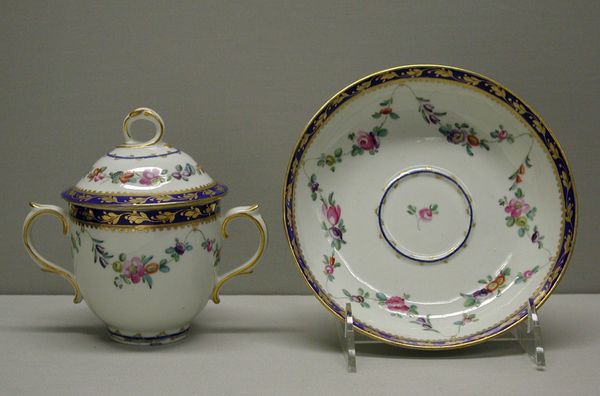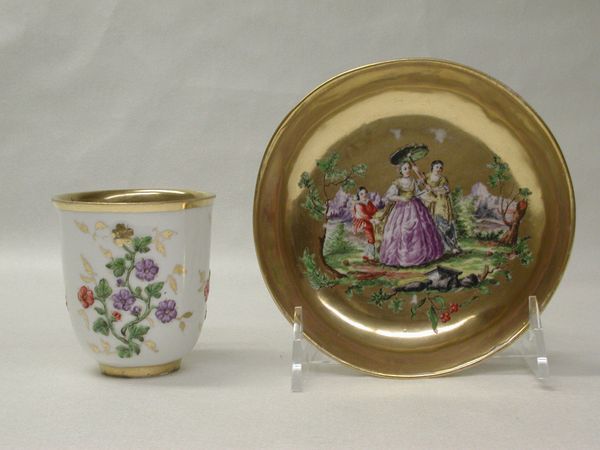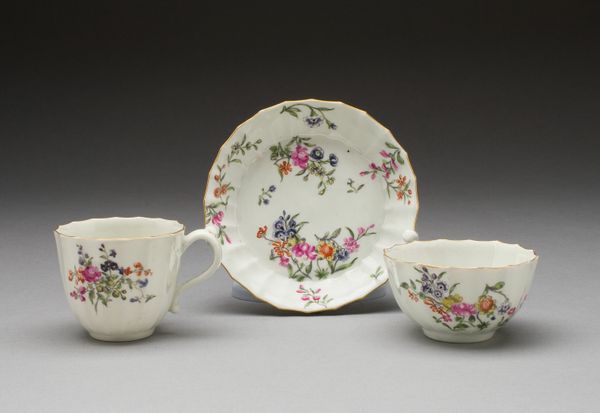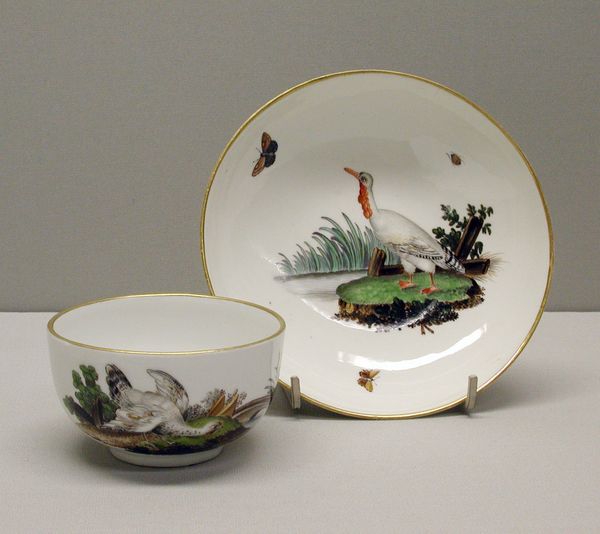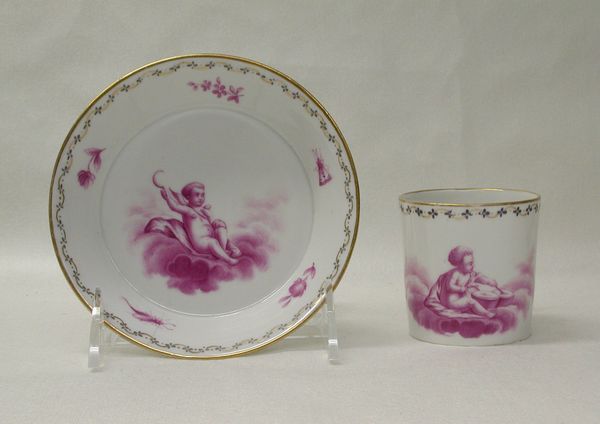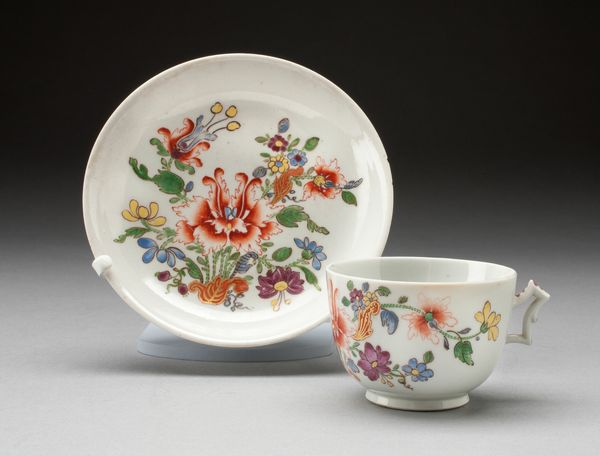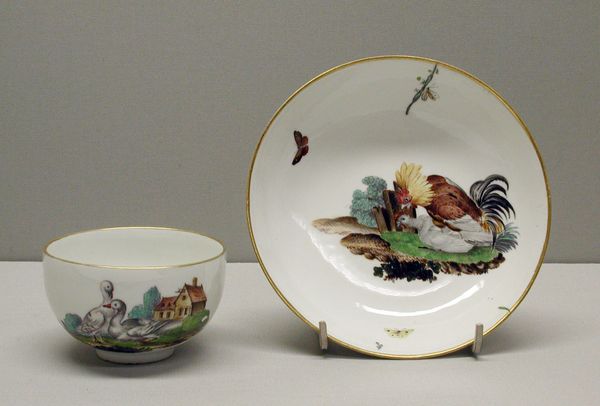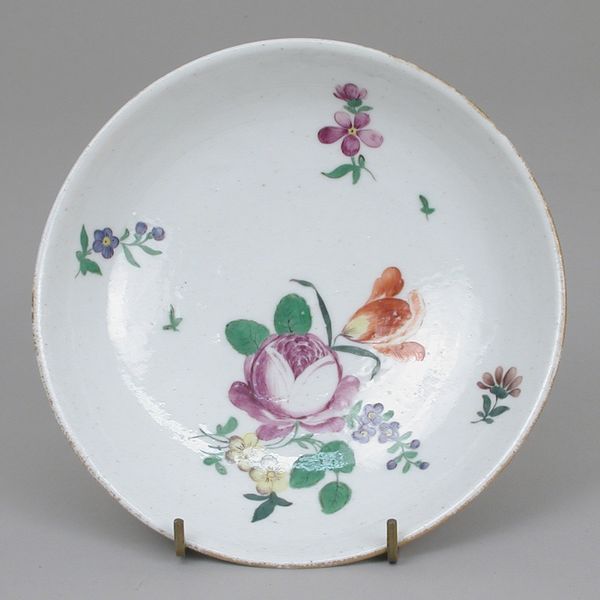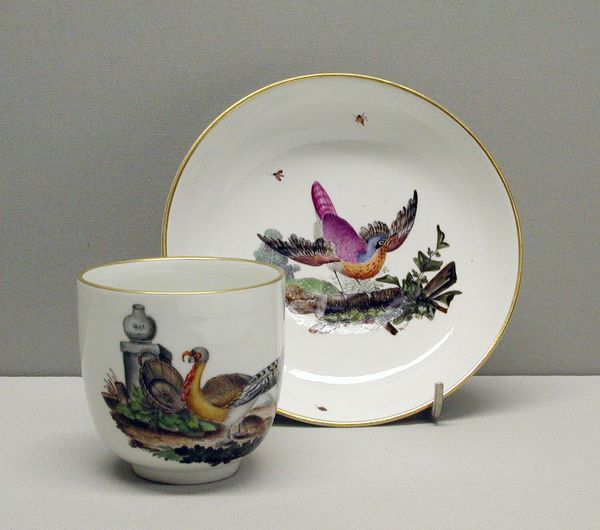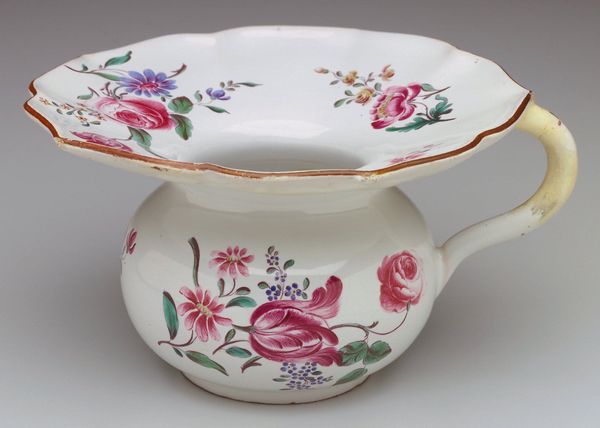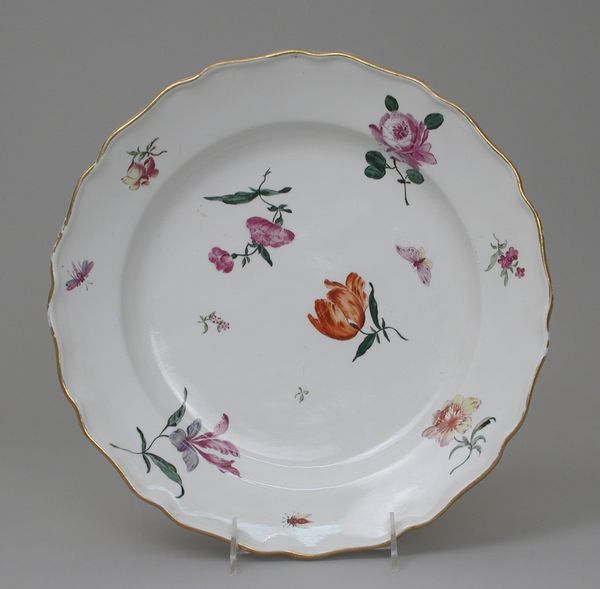
ceramic, porcelain
#
ceramic
#
porcelain
#
fruit
#
ceramic
#
decorative-art
Dimensions: Overall (cup .138): 2 3/4 × 2 1/2 in. (7 × 6.4 cm); Diameter (saucer .139): 5 in. (12.7 cm)
Copyright: Public Domain
Curator: Let’s turn our attention to this Cozzi Manufactory cup and saucer, dating from 1785 to 1799. It’s currently part of the collection here at the Metropolitan Museum of Art. Editor: My first impression is how delicate it seems. There’s a charming, almost naive quality to the painted fruit, a lightness that speaks to a very different era of consumption and display. Curator: Absolutely. Porcelain itself carries considerable symbolic weight, doesn’t it? Its origins are deeply tied to trade and the cultural exchange, particularly between Europe and Asia, where porcelain was perfected long before European factories. Editor: And the imagery is fascinating. The fruit isn't presented in a hyper-realistic way, more like a stylized abundance. Is it about more than just aesthetic appeal? Curator: Fruit, in art and iconography, almost invariably carries allegorical weight. Often it symbolizes fertility, prosperity, even temptation. Think about the history of still-life painting, how readily fruit could be used to signify earthly pleasures and the transience of life. Editor: It also places value in domesticity, doesn't it? Serving and consuming, specifically. What were the cultural connotations of tea or coffee drinking during the period this cup was made? Who got to use pieces like this, and what did it say about them? Curator: Well, tea drinking in the 18th century was increasingly associated with refinement, leisure, and social rituals among the upper and middle classes. Owning such delicately painted porcelain ware was undoubtedly a signifier of status, marking one’s access to global trade and luxury. It spoke to the wealth required to indulge in these imported goods. Editor: The delicacy also strikes me as communicating certain feminine ideals of the time - small, pretty, precious, created for an elevated lifestyle but still rooted in the domestic sphere. It reinforces the performative labor surrounding tea parties and similar social rituals. Curator: I think that's astute. Everyday objects were always deeply embedded within broader social dynamics. Even a simple cup and saucer. Editor: Considering it as such also reminds me not to ignore the colonial aspects here, even if not explicitly displayed. It recontextualizes everything – not just refinement and wealth, but how such privilege was obtained and maintained. Curator: Indeed, placing these objects into their larger economic and political context gives us such a richer understanding. Thanks for making me reconsider my perspective! Editor: The pleasure's all mine. The details of such a piece make its art-historical depth far more compelling.
Comments
No comments
Be the first to comment and join the conversation on the ultimate creative platform.
